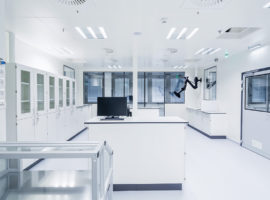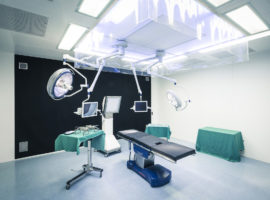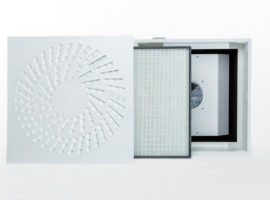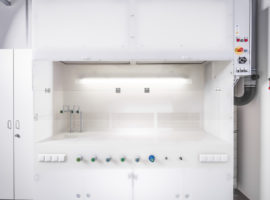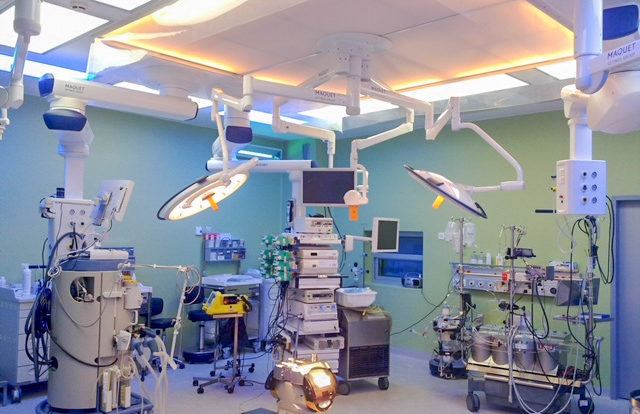
Product Info
Conventional systems or TAV ceilings type OPi, island flow with recirculation or exhaust air system
Description
The laminar flow (also known as a TAV blanket or "low-turbulence displacement flow blanket") is the most commonly used system for generating defined protection zones. Laminar flow systems use a terminal laminarizer (usually a nylon mesh "CG net") to generate a uniform air flow (air cushion) at every point, which flushes any contamination out of the critical area.
Since the typical degree of turbulence in such systems is usually higher than 5%, one cannot actually speak of a laminar flow, but of a low-turbulence flow. Although such systems are usually mounted on the ceiling and blow vertically downwards, horizontal or vertical systems are also possible.
The great advantage of vertically downward flows is that they can be supplied with cooler air (e.g. recirculated air with dry cooling) and the cooler air therefore also flows downwards on its own. In order to achieve low differential pressures, the terminal HEPA filters are often installed just above the laminarizer.
The main purpose of laterally mounted air deflectors is to keep the lateral flow rotor and cross flows (open doors) away from the vertical "downflow". This counteracts the reduction of the protection zone caused by the turbulence in the edge area. The further down the air guiding elements go, the larger the effective protection zone. Such laminar flow systems are operated with air velocities between 0.2 m/sec and 0.45 m/sec (horizontally up to 0.6 m/sec).
With large-area TAV ceilings, different outflow velocities must even be used to achieve a stable flow even in the central core area. In many cases, this requires very high air volumes, which can also be achieved, for example, with recirculation modules mounted directly on the side.
It should be noted that this is only a "product protection" effect. Contamination introduced into the room via people and appliances is released into the room and flushed out of the protection zone.
Applications:
Laminar flow systems can be found in virtually all cleanroom areas. However, the most complex application can be found in hospitals and operating theaters. Here, a large protection zone with low air velocity is required without lateral boundaries (air guide elements).





